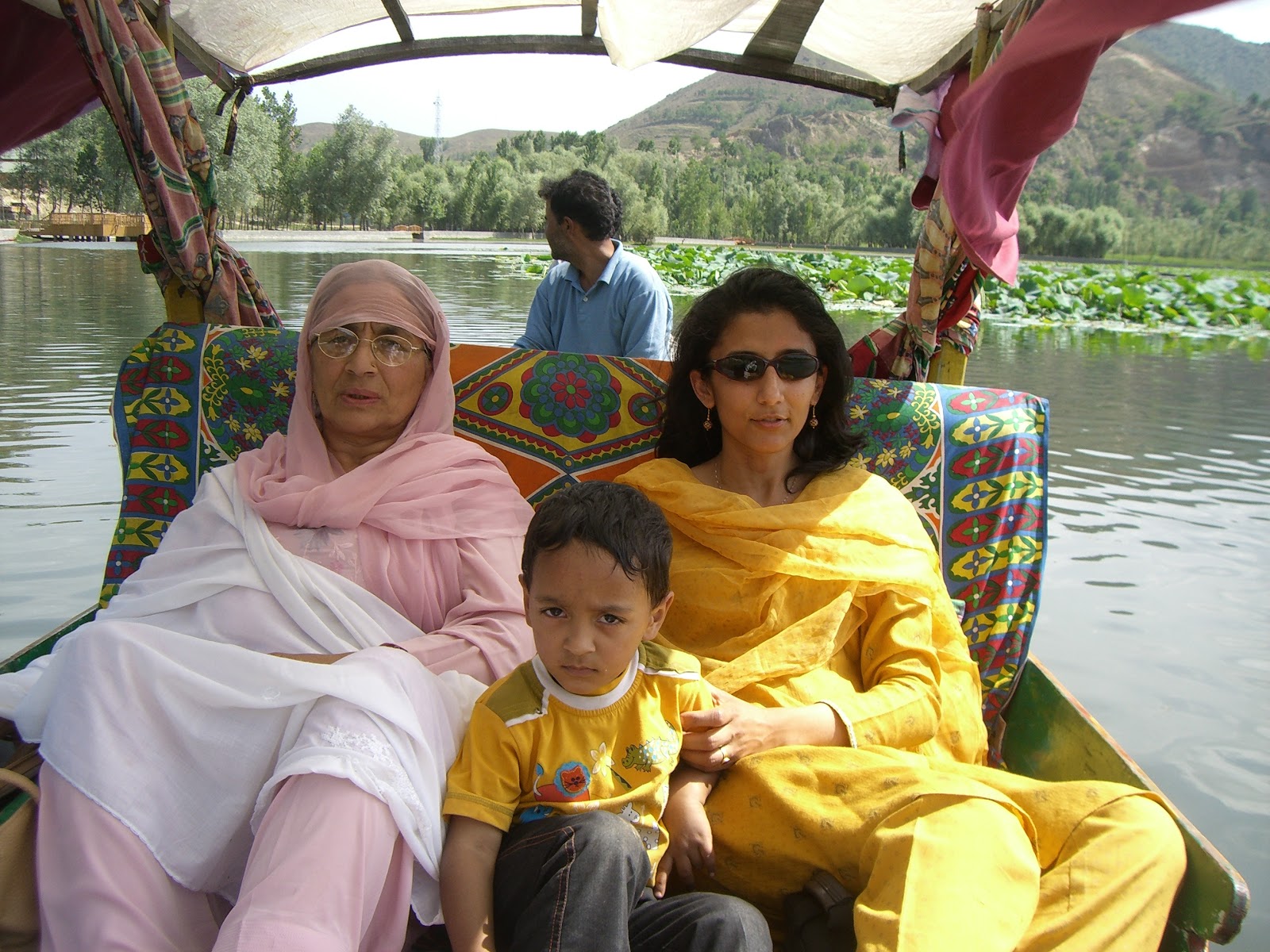Deliciously cooked meals, the chattering of children, saffron scented kehwa ( tea) had sitting outside in the early morning sun drenched patios and discussions over the art of shawl are among the lingering memories that I brought away from there. I was accepted into the fold with much love and affection by Iqbal’s mother and spent a memorable time with his family. Within the walled compound of Mohammad Iqbal’s home, I felt myself in a safe haven away from the turmoil that has torn apart the fabric of normal life for the last three decade.
In 2009, I was in Srinagar, the capital of Kashmir, to the roots of this art, and visit the karigars (embroidery craftsmen) who worked on my stoles. To learn more about this art which has nurtured generations of. Iqbal Mohammad’s family has been in this business for over three generations. Through him I am getting an opportunity to establish a connection with the people who bring these shawls alive with their talent and diligence. It is their story that needs to be told. And now more than ever when they toil for minimal wages and have to fight against the pace with which machines produce goods.
Living in the heart of Srinagar and small villages set amidst rice fields, Chinar trees, these people opened their doors wide for me. Gracious hosts, they welcomed me into their hearts and homes with a simplicity and dignity that put me completely at ease. I enjoyed many cups of tea as I listened, captivated and mesmerized when they spoke of their stoic resilience in the face of adverse conditions, bitter winters to toil away, generation after generation to produce masterpieces. It was a privilege to get an insight into their lives and understand the intricacy of their centuries old art. I took pictures, videos, of them at their work, and they looked into the camera with a mixture of amusement and candor and requested that I surely send pictures to them as some of them had never had pictures taken before
They live from hand to mouth for most of their lives. The existential realms of their and our world remain apart. Yet how does one measure this distance. It can be miles, can be culture or the demographics that place the customers and the artists in completely different hemispheres. The embroidered drapes become the bridges, reaching out and speaking for the hands that worked on them. Their embroideries are paeans to nature. Hands putting stitch after stitch to achieve an amazing creative perfection. Masters with 40 – 50 years of hard labor become living legends, albeit largely unsung. Their works demand fame and money, so why are their creators left so far behind?
What is it that can bring them closer to the world of opportunities that we live in? Their wishes are modest. “We would be satisfied if we are appreciated for our work and get enough to secure the future of our children. Our future generations will respect this art and enthusiastically take it up were it to give us back a fraction of the appreciation and economics it demands in the markets.”
With Laboni, it is my desire to have a fulfilling business that gives precisely the kind of encouragement that such talented and skilled craftsmen deserve. I feel that there is place for everyone under the sun. Sharing credit that is well deserved goes a long way in building mutual trust. Once trust is established, we can team up to put our best foot forward, and the tough situations simply become hurdles to be overstepped. The team of artisans from Kashmir have done that for me with the HAND EMBROIDERED COLLECTIONS.
From the House of Laboni- The Essence Of Elegance,I and the artisans from Kashmir, bring these collections to you.





